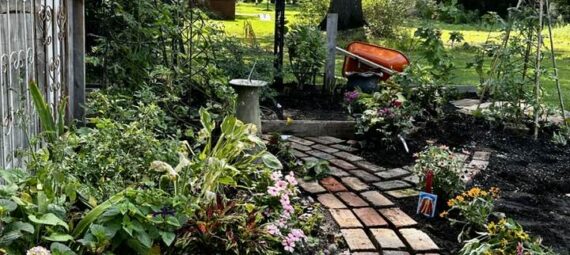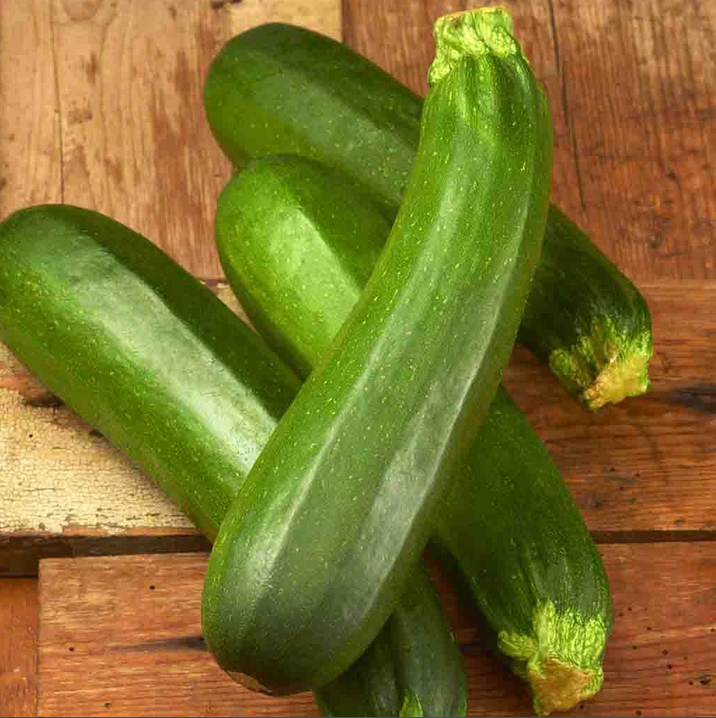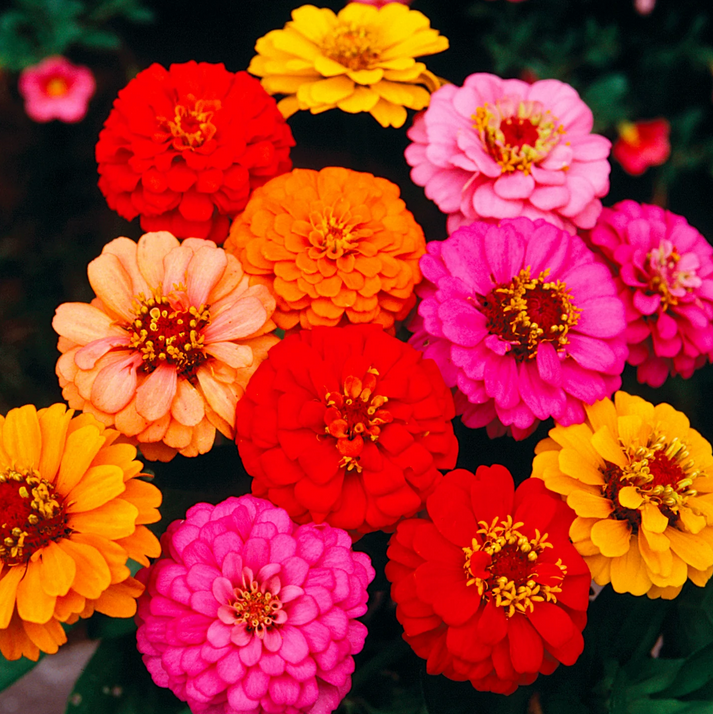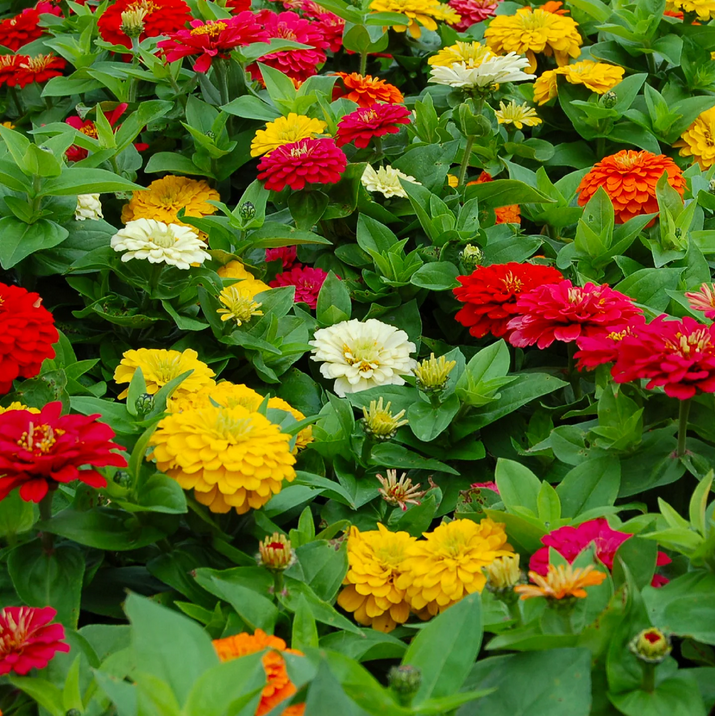On May 1, 2023, I moved to Water Valley, MS, and as soon as I had emptied most of my boxes, I began using the cardboard to create garden spaces.

My first challenge was to camouflage an air conditioner unit that was only a few feet from the door that led from my screened porch into my backyard. I built one side of the wall from rough cedar boards.
Some tall Shasta Daisies are in the corner. They are being staked by the trellis against that wall.
Across the brick stepping stones, you see a rather large forsythia bush. It is arching over and thereby camouflaging the water faucet there.
A bleeding heart plant is beside the forsythia. Both the forsythia and the bleeding heart have already bloomed for this year.

At the corner of the cedar wall–where it meets the side wall, I have planted a red coneflower, [it had no tag, but I believe that it is a Kismet], a Heavenly Blue Speedwell plant, some portulaca plants, and an evergreen Stella.

The other side of the wall is a mixture of picket fence panels and cedar boards.
In the middle of this side section, I have planted a Perfume Breeze Rose. Its blossoms are light pink [almost white], and they look very much like the blossoms on The Fairy rose.

Perfume Breeze Rose – Image Credit Certified Roses
https://www.certifiedrose.com/product/cl-perfume-breeze/
Perfume Breeze is very bushy, and it is a short climber. It will not climb higher than 8′. At this point, it is functioning more s a shrub rose than a climbing rose.



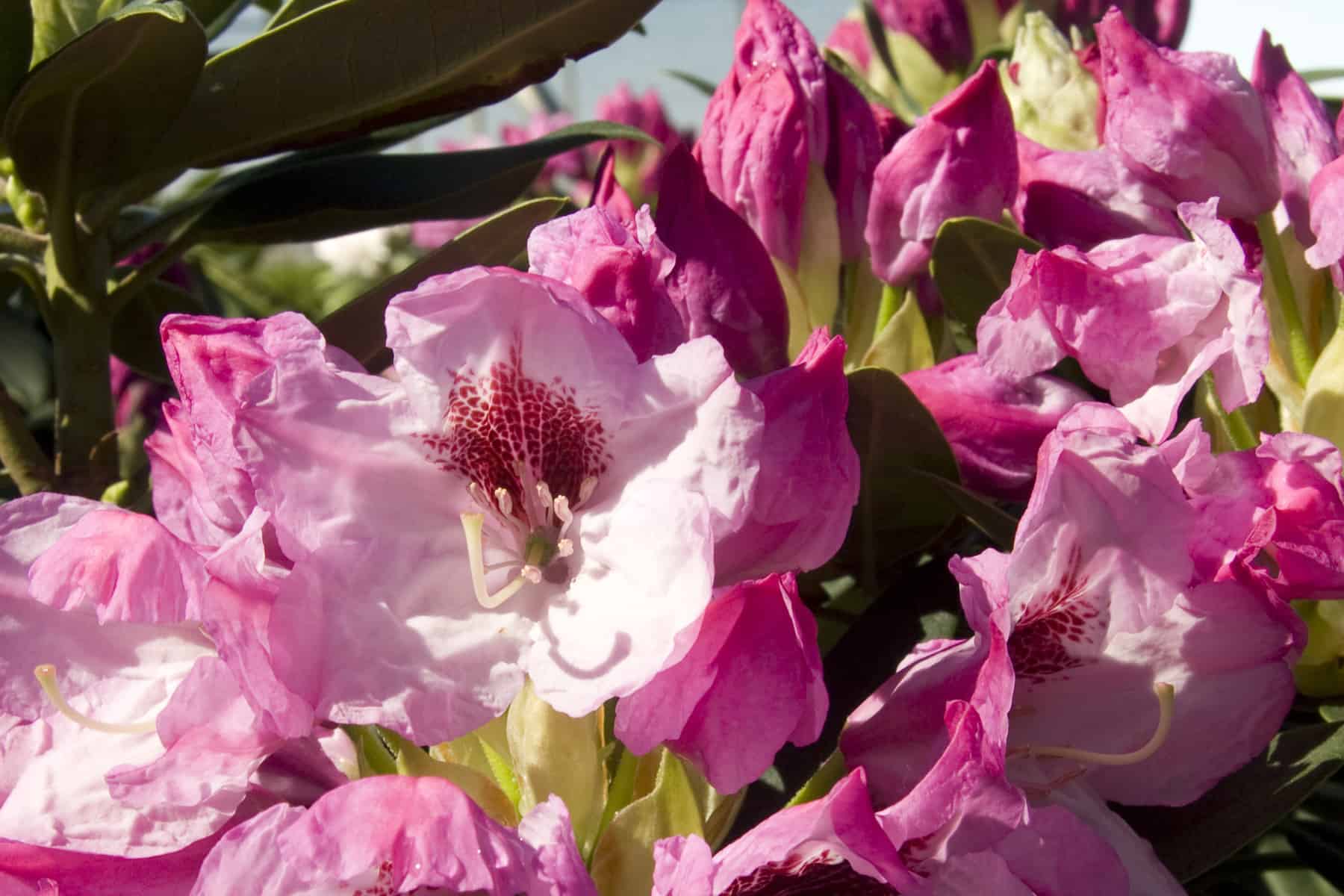
:strip_icc()/pentas_06-Graffiti-Red-Lace-0a1481f2f6b744dda55a68283938a773.jpg)
Vegetables & Fruits in My Garden
Cantaloupes

Hale’s Best Jumbo Cantaloupe – Image Credit: Ferry Morse
“About 6.5″ in diameter, this melon has a thick, sweet, salmon-orange flesh with a rich, aromatic flavor. It’s also high in vitamins A, B, and C. Yay!” Ferry Morse
Okra

Clemson Spineless Okra – Heirloom – Image Credit: Bonnie’s Plants
“Heirloom. High yields of spineless, tender ribbed pods with excellent flavor. Traditional favorite for soups and stews. Can be canned, fried, roasted or boiled. Harvest pods when 3 Inches Long. Pods get much bigger, but small pods are more tender. Plants just keep growing until cool weather in the fall, so they will get 6 feet or taller in areas with a long, warm growing season.” Bonnie’s Plants
Carrots in my 2o23 Garden
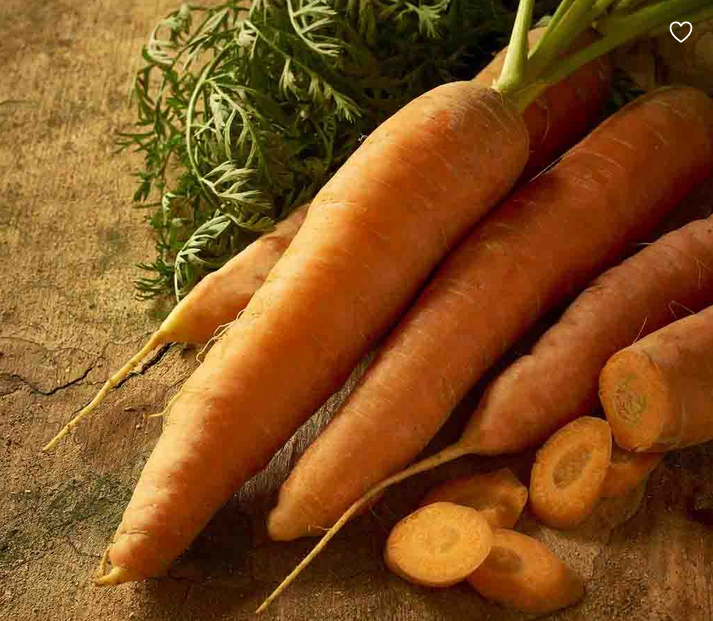
Scarlet Nantes Carrot – Heirloom – Image Credit: Ferry Morse
“This heirloom carrot originally from France has been improved in the U.S. over the last 50 years. It is now one of the most uniform and easy to grow open-pollinated carrot varieties. The rounded ends of the six-inch roots have even been known to grow well in heavier soils.” Hudson Valley Seed Company
“Scarlet Nantes carrots have a crispy, sweet flavor which makes them absolutely perfect for snacking. Nearly coreless, Scarlet Nantes carrots grow to be 6″ long and feature a great red-orange color. These carrots do particularly well in clay soil.” Ferry Morse
Growing Information
Tomatoes in my 2o23 Garden


Black Cherry Tomato – Image Credit: Bonnie’s Plants

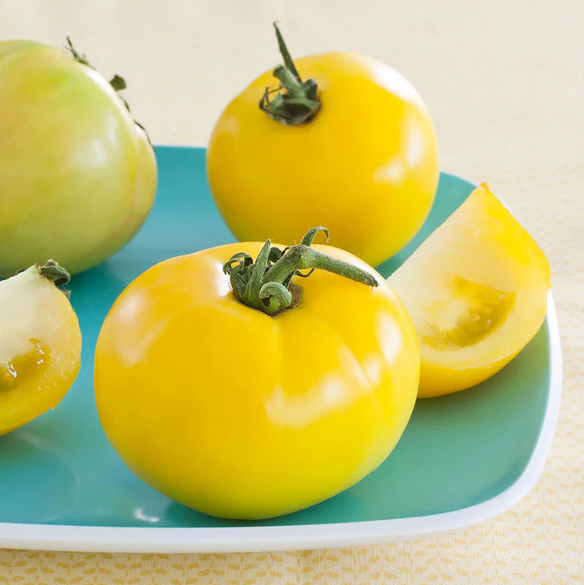
“Lemon Boy hybrid is an eye-catching tomato with wonderful color and flavor. The deep globe fruit is slightly tangy, but also sweet and mild, meaty, and smooth — perfect for slicing. Adds visual interest to the garden! Vines grow rather tall, so be sure to stake or cage the plant. The highly adaptable indeterminate vines are resistant to verticillium wilt (V), fusarium wilt (F), nematodes (N), alternaria stem canker (A), and gray leaf spot (St).” Bonnie Plants
Park’s Whopper produces fruit after 65 days

Park’s Whopper Tomato – Image Credit: Urban Farmer

Yellow Pear Cherry Tomato – Heirloom – Image Credit: Bonnie’s Plants
“Heirloom. Long, indeterminate vines produce a seemingly endless supply of mild flavored, pear-shaped tomatoes all summer. The tiny tomatoes are borne in clusters. This is one of the prettiest tomatoes in the garden — it’s beautiful in salads! This variety is known to bear fruit dependably through summer weather. Vines can grow 8 feet or longer, so give them a tall support or place to ramble. Moderately resistant to late blight (LB).” Bonnie’s Plants
Watermelons

Sugar Baby Watermelon – Heirloom – Image Credit: Bonnie Plants
“This small, round melon is called an icebox type because it is petite enough to fit in the refrigerator. This widely adapted heirloom variety is solid, dark green on the outside with a bright red, firm and fine-grained flesh that is super sweet.” Bonnie Plants
Fruit Size: 8 to 10 pounds
“Icebox melon vines typically spread 6 to 8 feet—compared to a 12- to 19-foot run for full-size watermelons. The yield per vine depends heavily on the variety (and also on growing conditions). ‘Sugar Baby’ produces anywhere from two to five melons per vine.” HGTV.com

Crimson Sweet Watermelon – Heirloom – Image Credit: Bonnie Plants
“A pretty, light green melon with dark stripes, Crimson Sweet is famous for its high sugar content and great flavor. Seeds are small and dark. The vines are resistant to anthracnose and fusarium wilt. Give vines plenty of room to run. Released by Kansas State University in 1963, it has become a classic favorite. High in lycopene.” Bonnie Plant
Fruit Size: Up to 20 pounds
Herbs

Basil Sweet Italian – Image Credit: Ferry Morse
“Our Sweet Italian Basil seeds will grow into an herb with an ultra pleasing aroma and a delicious taste.
“The leaves of this herb are attractive and contain a spicy flavor that makes green salads, tomato & cheese dishes, soups, and omelettes even more delicious!
“The entire plant has a very pleasing aroma and it makes a great companion for growing tomato plants.” Ferry Morse
Safe for Bees
Grows Best In: Full Sun
Days to Germination: 5-10 Days
Days to Maturity: 85 Days
Best Container Size: 12″+
Botanical Name: Ocimum basilicum
Flavor: Spicy sweet!
Preparation Ideas: Perfect for your morning omelette or any salads or soups you have during the day.
Plant Type: Herb

Oregano – Image Credit: Ferry Morse
“A flowering plant of the mint family, oregano produces leaves that are an essential ingredient in Italian and Spanish dishes. Oregano is also commonly used in salads, stews, stuffing, fish, and egg & cheese dishes; similar to Marjoram, but with a sharper fragrance and flavor.
*Scientific genus: Origanum
Species: vulgare
Safe for Bees
Grows Best In: Full Sun
Days to Germination: 8-14 Days
Days to Maturity: 85-90 Days
Best Container Size:12″+
Growing Height: 14-22″
Botanical Name: Origanum vulgare
Flavor: Similar to marjoram but sharper!
Preparation Ideas: Popular in Italian and Spanish recipes.
Plant Type: Herb

Rue – Image Credit: Johnny’s Seeds
“Lacy blue-green ornamental.
“Bushy habit is ideal for short hedges or borders. Unique and attractive foliage makes a useful cut flower filler, lasting for up to three weeks in a vase. Pungent aroma. Limited culinary use due to strong bitter flavor.” Johnny’s Seeds
Perennial in Zones 4-9.
Host Plant for Black and Giant Swallowtail Butterflies
Medicinal Warning:
Sage
Flowers – Annuals

Alyssum Carpet of Snow – Image Credit: Ferry Morse
A hardy annual that’s easy to grow, Carpet of Snow will quickly shape themselves into low, lacy mounds of flowers and foliage with clumps measuring about 8″ wide. Creates a pleasing contrast when planted with Alyssum Royal Carpet.” Ferry Morse

Forget Me Not – Image Credit: Ferry Morse
Product Information
“The annual Forget Me Not flower features lacy sprays of tiny blossoms that provide splashes of clear, celestial blue in the garden.
“A very tough, durable dwarf plant, forget me not is excellent for rock gardens, borders, and beds in either sun or light shade.” Ferry Morse
Growing Information
Safe for Bees
Marigolds

Marigold – French Double Dwarf – Image Credit: Ferry Morse
Tagetes erecta
“French Double Dwarf Marigolds bloom very early on compact plants and bear a profusion of showy double flowers; three brilliant colors in this petite mixture: gold, orange, and crimson. Flowers bloom through summer until frost.” Ferry Morse
Growing Information

